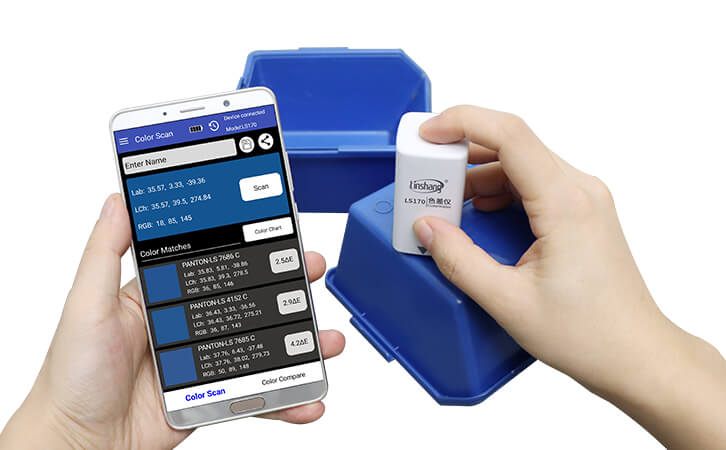Application of Colorimeter in Adaptive Lens
Since the launch of portable colorimeter, the demand for photochromic lenses (lenses that change color based on sunlight) has risen sharply! Today, adaptive lenses account for nearly 16% of all glasses purchased in China every year. Those who need constant vision correction usually choose this type of glasses to avoid the need for separate sunglasses. Customers rely on their lenses to be durable, long-lasting and transition seamlessly and unobtrusively. Manufacturers achieve this by creating complex color layers that work together to create uniqueness.
I. The necessity of lens color measurement

However, transition lenses are not as easy to manufacture as standard transparent lenses. Using multiple colors and dyes may pose unique challenges to the manufacturing process, because each additional step leaves room for potential errors. In order to minimize errors and create ideal combinations, some manufacturers rely on the advanced technology of portable colorimeters as an integral part of product development and production.
Photochromic dyes are used to produce adjustable lenses that change color when exposed to ultraviolet light. However, it is not just the type of dye that produces this effect, but the changes made through a series of unique different color layers that are arranged to ensure that the transition from darkness to light is gradual and effective. Transitions Optical, the largest American manufacturer of adaptive lenses, reports more than 3,000 different patented dyes. This wide range of dyes is needed to create a successful transition, which is achieved by layering the dyes on top of each other.
Creating a high-quality adaptive lens requires a high level of color accuracy to ensure that the lens performance meets the required color standard. However, the nature of materials and products presents many challenges in the color measurement process:
1. Smaller test window
These lenses must be tested based on the transition after UV exposure. Once the UV source is removed from the process, the lens will begin to restore its original clear appearance. This makes the precise positioning test in the process challenging because the color always changes slightly.
2. High-interest results
Lenses can quickly disappear from darkness to light not just fashion, they also play an important role in protecting health and happiness by reducing eye fatigue and reducing harmful ultraviolet radiation. At the same time, these lenses need to be clear enough to allow users to be fully visible, especially when driving.
II. Gloss and color measurement of lenses

All lenses have gloss. This gloss affects the appearance of colors and may complicate color measurement. You can use Linshang gloss meter to measure the specific gloss of the lens surface.
It is very important to test the color after making the lens to ensure that it is both beautiful and reasonably made. Manufacturers do not want their lenses to suddenly turn black when they drive, nor do they want these lenses to become pathologically green after a day at the beach. Color measurement using a portable colorimeter is the only way to verify that this will not happen. Therefore, although color measurement may pose a challenge to lens manufacturers, it is also absolutely necessary.
Using a portable colorimeter, manufacturers can control the color quality in the dye manufacturing and layering process, thereby creating the precise transitions customers need. These instruments significantly improve the ability to manage production, spot check quality and ensure the elimination of errors and ultimately improve product quality. This is especially important for visual aids such as adaptive lenses; the product shapes the customer ’s perception of the world and maintains a strict color quality control process, which is essential to ensure that they can rely on meeting their medical needs.